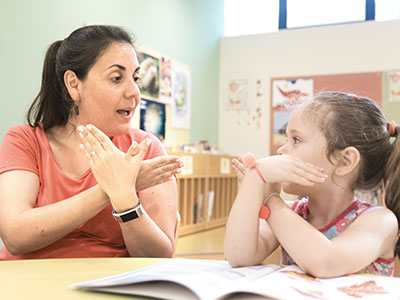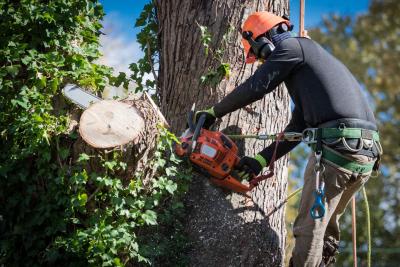 |
Mold Safety Awareness |
0.50 |
This course covers a variety of topics on mold that will prepare you to handle any situation you should come upon. These topics include identifying and analyzing mold hazards, protective measures, and rules and regulations for mold. |
 |
Construction Safety & Prevention Program: Worker Rights Anti-Retaliation |
0.25 |
This course covers a worker's rights and resources under OSHA and the lengths that OSHA goes to in order to protect workers. In addition, you will learn about your right to be free from retaliation and where to go to file a complaint. |
 |
Electrical Safety for the Non-Electrical Skilled Worker |
0.25 |
This course covers additional safety training for electrical hazards that non-electrical skilled workers are exposed to in the workplace. |
 |
Beginning Graphic Design |
0.75 |
This course covers all of the key components of graphic design, from typography and color to branding and visual identity. |
 |
Hazard Communication Advanced |
1.00 |
This course covers an advanced level of hazard communication. Chemical hazards, in-depth analysis of chemical labels, as well as protection from chemical hazards are all covered in this course. |
 |
Introduction to Education Policy and Law |
1.25 |
This course covers an introduction to educational policy and law. This course will help you develop new knowledge about the fundamental principles and legislation that shape the education system, enabling you to understand what factors influence educational practices and decision-making. |
 |
Construction Safety & Prevention Program: PPE |
0.75 |
This course covers an overview of the purpose of personal protective equipment (PPE), what to keep in mind when using PPE, and the different types of PPE. |
 |
Attention-Deficit/Hyperactivity Disorder (ADHD) |
0.50 |
This course covers Attention-Deficit/Hyperactivity Disorder, also known as ADHD. A key discussion point of this course is whether ADHD is the wandering of attention, which is a trait, versus the deficit of attention, which is a disorder. We'll cover topics that include what ADHD is, its characteristics, the signs of ADHD, and possible medications or accommodations. It is just one out of many educational courses we offer. This course will help you develop new knowledge about children and help you better understand your role. |
 |
Autism and Bullying |
0.50 |
This course covers Autism spectrum disorder (ASD) and Bullying. The course will begin by going over what autism is, and then it will continue to teach you about the bullying that may occur along with it, and how you can assist. This content will help you learn more about children with ASD and will help you understand how you might support these children. |
 |
Autism Spectrum Disorder |
1.50 |
This course covers autism spectrum disorder (ASD), focusing on how it is diagnosed, how it presents in the classroom, and school supports. This content will help you increase your knowledge about students with ASD and will help you understand how you might support these students. |
 |
Introduction to American Sign Language |
0.50 |
This course covers basic American Sign Language also known as ASL. This course will help you develop new knowledge about what American Sign Language is, where it comes from, and who benefits from it. You will also learn how ASL is used and some common signs for the classroom. |
 |
Introduction to Assessment for Teachers |
1.25 |
This course covers basic assessment information for teachers. It will be a refresher for basic concepts generally covered in a teacher preparation program. Educators must understand the reasons for assessment and its importance in supporting appropriately designed instruction for students. This course will help you develop new knowledge and review prior knowledge regarding the impact of assessment on teaching and learning. |
 |
Basic First Aid |
1.00 |
This course covers basic first aid for a variety of ailments, including, but not limited to, bleeding, fractures, wounds, checking for spinal injuries, bites and stings, and choking.
Please note: This course is meant as a general overview of Basic First Aid and will not result in an official first aid certification. |
 |
Safety Communication and Training Techniques |
1.50 |
This course covers certain safety and logistics measures for the workplace. This includes topics like different types of safety training, creating safety programs with different learners in mind, and how to use various types of media to communicate objectives. |
 |
Chainsaw Safety |
0.50 |
This course covers Chainsaw Safety. You will learn the proper ways to start a chainsaw, what it can cut, and how to operate a chainsaw safely. |
 |
Child Abuse Prevention and Awareness for K-12 |
1.50 |
This course covers child abuse and prevention awareness. This course will help you develop new knowledge about students and will help you understand how children who may be abused can be helped within schools. |
 |
Collaboration with Team Members for Teachers |
0.50 |
This course covers collaboration with team members for K-12 educators. You will learn what collaboration looks like in the school setting and what it means to use effective collaboration strategies. This course will also dive into what it means to be an effective communicator in a professional setting. |
 |
Collaboration with Team Members for Paraprofessionals |
1.00 |
This course covers collaboration with team members for paraprofessionals. You will learn what collaboration looks like in the school setting and what it means to use effective collaboration strategies. This course will also dive into what it means to be an effective communicator in the professional setting. |
 |
Medication Safety Basics |
0.50 |
This course covers common adverse drug events (ADEs) and their causes in adults and children, and ADEs associated with some specific common medications. It includes safety precautions and suggestions for reducing or preventing ADEs and the emergency department visits, and sometimes hospitalizations, that result from them. |
 |
What's Bugging You? Communicable Diseases |
0.17 |
This course covers common communicable diseases, how they enter the body, and how certain policies can aid in lowering the likelihood of transmission. |
 |
AI in Education: Crafting Effective Policies for Educators and Administrators |
1.00 |
This course covers crafting effective artificial intelligence policies for educators and administrators. It is just one out of many K-12 educator courses we offer. This course will help you develop new knowledge about the benefits of utilizing artificial intelligence while upholding the principles of ethics, equity, and data privacy. Educators and administrators will be able to navigate the fundamentals of artificial intelligence and create robust policies that ensure responsible and inclusive artificial intelligence adoption, ultimately enhancing student learning outcomes. |
 |
Deaf-Blindness and Communication for Paraprofessionals |
1.00 |
This course covers Deaf-Blindness and Communication. It will help you develop new knowledge about deaf-blind students. You will learn what communication systems to use and strategies to implement in the classroom. It will also help you understand your role as a paraprofessional when working with a deaf-blind student. |
 |
Deaf-Blindness and Communication for Teachers |
1.00 |
This course covers Deaf-Blindness and Communication. It will help you develop new knowledge about deaf-blind students. You will learn what communication systems to use and strategies to implement in the classroom. It will also help you understand your role when working with a student who is deaf-blind. It is just one out of many teacher courses we offer. |
 |
Reducing Foodborne Illness Risk Factors in Food Service and Retail Establishments |
0.50 |
This course covers different risk factors that are insufficiently controlled in institutions, retail food, and restaurants. Recommendations to help these places control these risk factors are also given. |
 |
Accessibility |
0.50 |
This course covers disability etiquette in the workplace and legal requirements, in addition to accommodations for employees and patrons with disabilities. Interacting with people with disabilities is based on a knowledgeable and evolving foundation with room for growth. Employees in the workplace and people with disabilities who enter these workplaces will feel more welcome and included the more this foundation is relied upon. |


























